Contents
Raspberry jelly is a very tasty and healthy dessert. It can be served with toast, buns with butter, cookies, used in the manufacture of cakes, pastries. Preparing a wonderful raspberry dessert for the winter is quite simple.
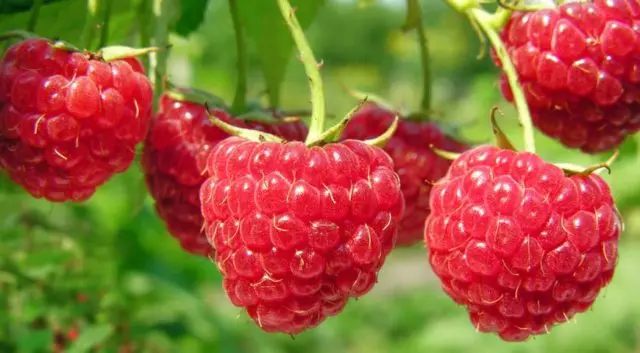
Useful properties of raspberry jelly
Raspberry jelly enriches the diet with many nutrients. By adding it to your daily diet, you can quietly strengthen your immunity without making any special efforts. You can put bright raspberry jelly pieces on a buttered bun or toast, make sweet pastries or desserts based on it. The antiseptic properties of berries will protect against viral and colds during the cold season.
Herbal medicinal tea with raspberry jelly will help during colds:
- replenish the body with vitamins, microelements necessary to strengthen the body;
- will have a diaphoretic effect;
- will help to reduce the temperature or keep it at the proper level.
Regular use will improve digestion, eliminate anemia, help normalize blood pressure, improve complexion and much more.
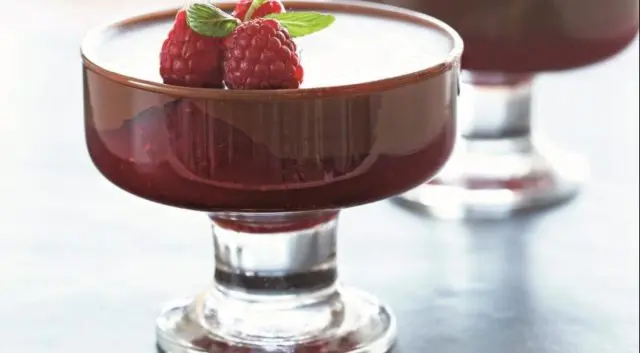
How to make raspberry jelly
You can cook raspberry jelly using different recipes. But for their implementation, you need to know some of the nuances that will help you quickly and efficiently cope with the task.
It is worth considering some of the secrets of its preparation:
- berries must be whole, selected, not spoiled or unripe;
- if the raspberry crop needs to be harvested from your site, this should be done in dry weather so that the berries are not wet, otherwise they will immediately turn into a viscous slurry;
- to get a jelly-like consistency without the addition of extraneous thickeners, sugar and berries should be taken in a 1: 1 ratio;
- when gelling agents (gelatin and others) are used, less sugar can be taken.
Raspberry jelly recipes for the winter
There are different ways to save a raspberry crop for the winter. There are various recipes for raspberry jelly for the winter: with gelatin, pectin, agar-agar. You can choose any composition, taking into account your preferences and capabilities.
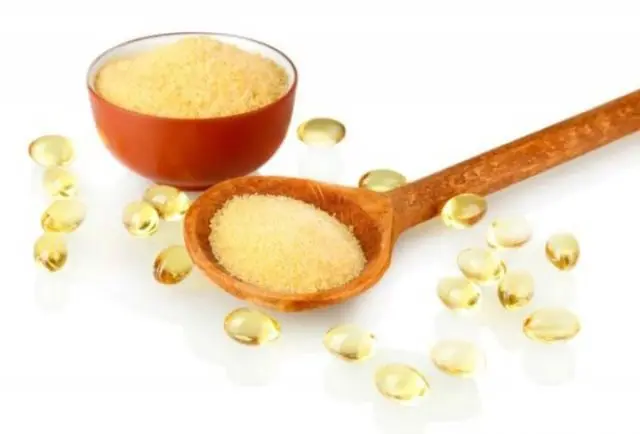
A simple recipe for raspberry jelly for the winter with gelatin
Components:
- raspberries – 1 l;
- sugar – 1,5 kg;
- gelatin – 50 g;
- cold, boiled water (for soaking) – 0,15 l.
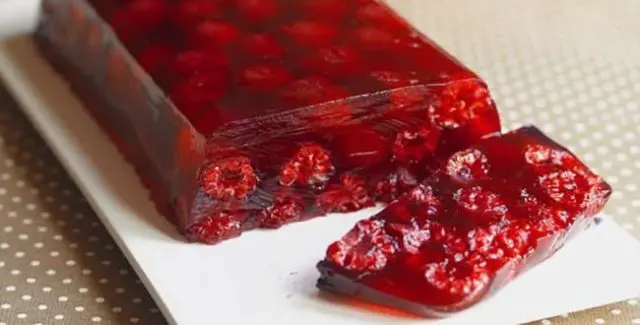
Get a liter of juice from the collected berries, strain. Pour sugar into it, heat, bring to a boil. Remove the gas, pour the solution with a thickener into the juice, mix. Pour the finished raspberry jelly with gelatin into jars, close.
Recipe for raspberry jelly for the winter without cooking
Ingredients:
- raspberries – 2 kg;
- sugar – 1,5 kg.
You can prepare raspberry jelly for the winter in a cold way, that is, without cooking. Strain clean, sorted berries to obtain juice through a multilayer gauze filter. Add 1,5 kg of sugar per liter of juice. Mix everything well until a homogeneous composition is obtained. Let the berry syrup stand for ten hours, and then twist it in dry, sterile jars. Keep raspberry jelly prepared for the winter without cooking in a cold place.
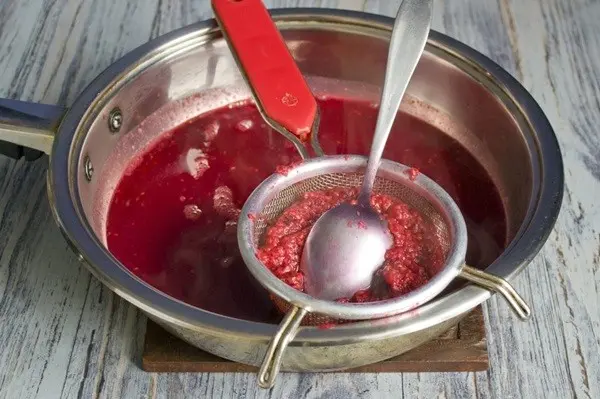
Raspberry jelly for the winter without gelatin
Ingredients:
- raspberries (fresh) – 1,25 kg;
- sugar – 0,6 kg.
Rinse the berries with running water and transfer to an enamel pan. From the moment of boiling, raspberry puree cook for 3 minutes. Wet fruits give their juice well and you do not need to add water. Grind the berries using a sieve for this purpose. The remaining cake is used to make compote.
The resulting berry mass must be weighed. You should get 0,9 kg. Put the pan with raspberry juice on the fire and boil down to about 0,6 kg (35-40%). Put 600 g of sugar into the reduced mass, boil for 5 minutes. Then cool and boil again.
Pour raspberry jelly into jars, which should be prepared in advance. Leave open for a couple of days until the contents are covered with a dense crust on top. Then screw on the raspberry jelly with sterile, airtight lids.
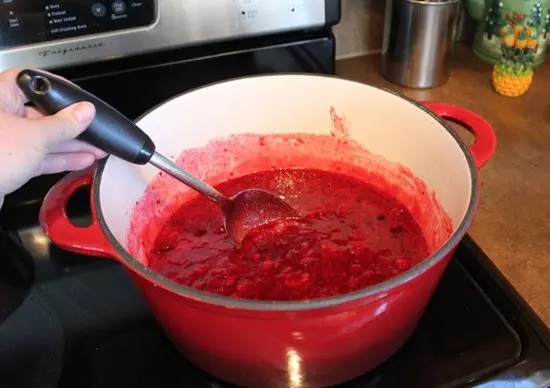
Ingredients for another recipe:
- raspberry juice – 1 l;
- sugar – 1 kg.
At the initial stage of preparing raspberry jelly, it is necessary to prepare the berries. They should be washed and placed on a sieve to get rid of excess liquid. When the raspberry mass dries a little, transfer it to the pan. Next, cover the berries with water to the very tops, but no more. Cook raspberry mixture until soft.
Arrange on a sieve covered with several layers of gauze. Raspberry juice should drain. Add sugar to it and cook until desired thickness. If raspberry jelly, falling in drops on a hard surface, does not spread and forms stable forms in the form of drops, then it is ready and can be preserved.
Seedless raspberry jelly
Ingredients:
- raspberries (juice) – 1 l;
- sugar – 650
Berries should be ripe, juicy, but not overripe. Squeeze out the raspberry juice using cheesecloth. Pour into a saucepan, dissolve sugar in it, put on fire. Once it boils, reduce the heat to minimum. At the end of the raspberry jelly boil, which will last approximately 40 minutes, 2/3 of the original volume should remain. At the last stage, throw citric acid.
To determine that raspberry jelly can be closed, it is worth using this method: if a drop that has fallen into cold water immediately curls into a ball, then you can proceed to pasteurization (20-30 minutes) and seaming. During the pasteurization of raspberry jelly, the seething should be very weak, almost imperceptible.

Yellow raspberry jelly for the winter
Yellow raspberries are tastier and sweeter than red raspberries. This is a dietary product, which also has a low allergenicity. To cook raspberry jelly for the winter, you should use ripe, but not overripe berries. Otherwise, the unique raspberry flavor will be lost.
Ingredients:
- raspberries (yellow varieties) – 1 kg;
- sugar – 0,6 kg;
- water – 0,25 l;
- gelatin – 30 g;
- citric acid – 1 tsp.
Leave gelatin in 0,15 liters of cold water and leave for some time to swell. Also dissolve citric acid for further introduction into jelly. Berries mixed with sugar and put on fire. Boil them over low heat for no more than 10 minutes. Then pass the sweet mass through a sieve and boil the resulting raspberry puree again for the same amount of time, adding citric acid. Introduce swollen gelatin, stir well. At the moment of boiling, turn off the fire. Pour the finished product while still hot into storage containers, seal them hermetically.

Ingredients for another recipe:
- yellow raspberries (juice) – 0,2 l;
- pink or white currant (juice) – 0,6 l;
- sugar – 950
Squeezed juices, raspberry and currant, mix together. Dissolve sugar in them without heating. This may take at least half an hour. Pour into small, clean jars with tight-fitting lids.
Red raspberry jelly with agar-agar
Agar-agar is a vegetable analogue of gelatin. Seaweed is the source of it. Accordingly, it is more useful for the body and has a number of unique properties:
- zero calorie;
- rich mineral and vitamin complex;
- envelops the walls of the stomach and protects them from the destructive effects of hydrochloric acid contained in the digestive juice;
- has a laxative effect;
- removes toxins from the body, including harmful substances from the liver;
- normalizes blood composition (cholesterol, glucose).
Desserts prepared on the basis of agar-agar are healthy and tasty. It is insoluble in cold water. It must be added to hot dishes with a temperature of +90 degrees.
The technology for making jelly is something like this:
- Dissolve agar-agar in a liquid (juice), let it swell and raise the temperature of the solution to +100. The powder must be completely dissolved;
- take approximate proportions of 1 tsp. for 1 glass of liquid;
- cool naturally or in the refrigerator.
The gelling ability of agar-agar is much stronger than that of gelatin. It hardens very quickly and this happens even at a temperature of + 35-40 degrees. It has a more delicate, inconspicuous taste, which compares favorably with gelatin. The latter, if you overdo it a little with its dosage, will immediately make itself felt with a sharp “meat” note.
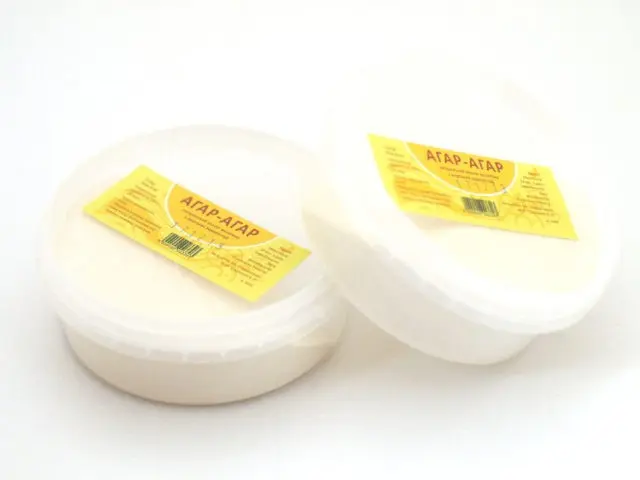
Ingredients:
- raspberry juice (with pulp) – 1 l;
- sugar – 1 cup;
- water – 2 cups;
- agar-agar (powder) – 4 h. l.
Grind the berries with a blender. Add cold water (1 cup) to a thick raspberry mass and pass through a sieve. Discard the remaining bones. The result is a thick raspberry juice with pulp.
Soak agar-agar in a second cup of cold water, to which sugar is added, for ¼ hour. Put the saucepan with the solution on the fire and boil for ½ minute. Then combine it with juice and bring to a boil again, immediately turn off.
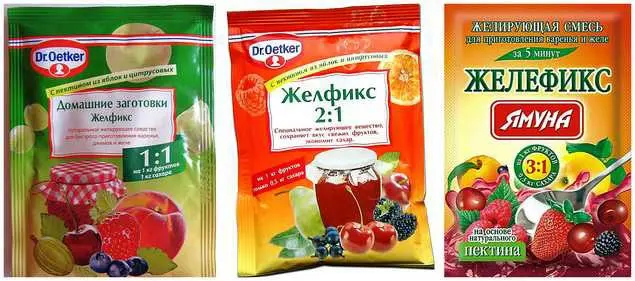
Raspberry jelly with pectin
Pectin is a gelling agent derived from plant sources, primarily citrus peel, apple pomace, or beet pomace. In the food industry, they are referred to as E440. Used for jams, jams, pastries, drinks and other foods.
It appears as a light gray, yellow or brown powder. It is a water-soluble fiber. Has the ability to create transparent gels. But unlike gelatin, it is used only for making jelly with a large amount of sugar, which contributes to its activation. Pectin is recommended to be introduced into the product at a temperature of + 45-50 degrees.
It has a number of useful properties:
- is food for the beneficial environment of the gastrointestinal tract;
- removes harmful substances from the body through the digestive tract;
- lowers cholesterol, blood glucose levels;
- relieves the symptoms of diarrhea;
- reduces the feeling of hunger;
- benefits the joints;
- prevents the appearance of tumors in the intestines.
The disadvantages include the increased allergenicity of pectin prepared from citrus fruits. Also, pectin additives can slow down the absorption of medicinal substances into the body.

Ingredients:
- raspberry – 1 kg;
- pectin (apple) – 20 g;
- sugar – 0,5 kg;
- citric acid – 1 tsp.
If raspberries from your garden grow away from dusty roads, you can not wash them. But berries purchased on the market are best subjected to a cleansing effect of water. Then, to get rid of excess moisture, transfer the raspberries to a colander.
Send the berry mass to a basin or pan, where, when heated, it will instantly acquire a liquid consistency. Boil for 5 minutes and pass through a sieve, separating the bones from the juicy liquid pulp.
Pectin is administered as follows:
- cool the raspberry mass to +50 degrees;
- dissolve pectin in water or mix it with sugar (3-4 tablespoons);
- pour, pour into a saucepan with juice.
If pectin is immediately introduced into the hot raspberry mass without prior preparation, it may curl up into lumps. Then some of it will be lost and the raspberry jelly will be liquid.
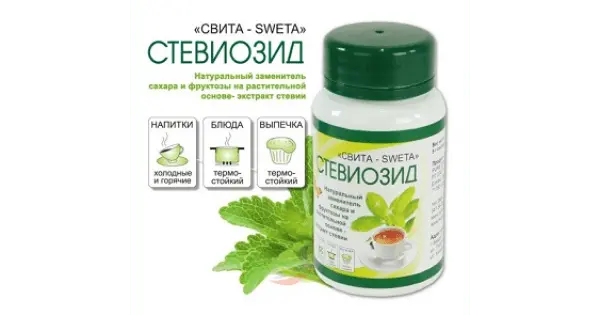
Caloric value
The calorie content of raspberry jelly is quite high due to the high sugar content. It ranges from 300-400 kcal / 100 g. The indicators vary depending on the ingredients and their quantity.
If desired, you can make raspberry jelly, the calorie content of which will be much less. Nowadays, such recipes are used not only by diabetics, obese people, but also by everyone who monitors their health. In dietary raspberry jelly, instead of sugar, one of the sweeteners is used, which are sold in a pharmacy or supermarket chain, health food stores.
Terms and conditions of storage
Raspberry jelly made without boiling is best stored in the refrigerator. The shelf life of such blanks is much less than that of conventional preservation, only 1-3 months. Raspberry jelly, closed according to all the rules of preservation, will be stored much longer, all year long. And the conditions for its storage will be simpler and more unpretentious. It is enough to send raspberry jelly to the shelf in the pantry, basement or kitchen cabinet so that it stands all winter and even waits for the next harvest.
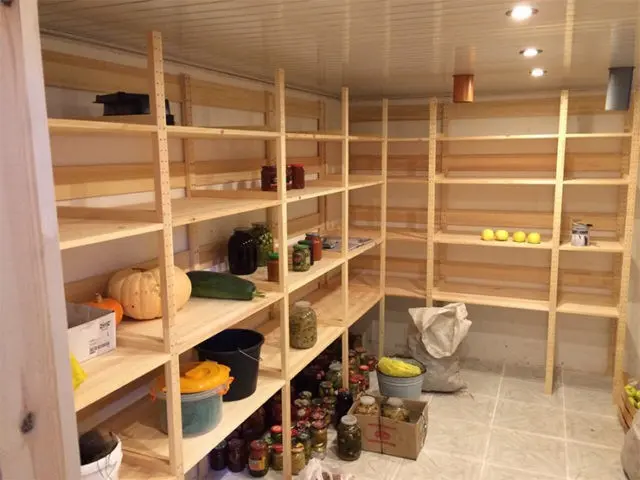
Conclusion
Raspberry jelly will give not only incredible taste sensations and excellent mood, but also saturate the body with useful substances. It is easy to prepare even for a novice housewife.









